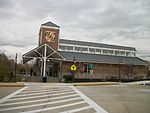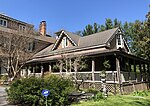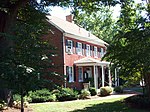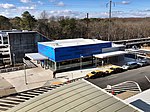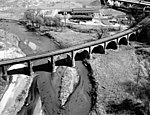Hanover, Maryland
1862 establishments in MarylandPopulated places established in 1862Unincorporated communities in Anne Arundel County, MarylandUse mdy dates from January 2019

Hanover is an unincorporated community in the Baltimore/Annapolis area in northwestern Anne Arundel County and eastern Howard County in the U.S. state of Maryland, located south of Baltimore. The community is located approximately at the intersection of Maryland State Highway 100 and the Baltimore–Washington Parkway. It is part of the Baltimore-Washington Metropolitan Combined Statistical Area and is located just southwest of the Baltimore-Washington International Thurgood Marshall Airport (commonly known as "BWI"). It is bordered by Severn to the south, Linthicum to the east, and Elkridge to the north and west.
Excerpt from the Wikipedia article Hanover, Maryland (License: CC BY-SA 3.0, Authors, Images).Hanover, Maryland
Hanover Road,
Geographical coordinates (GPS) Address Nearby Places Show on map
Geographical coordinates (GPS)
| Latitude | Longitude |
|---|---|
| N 39.192777777778 ° | E -76.724166666667 ° |
Address
Hanover Road 6455
21076
Maryland, United States
Open on Google Maps
